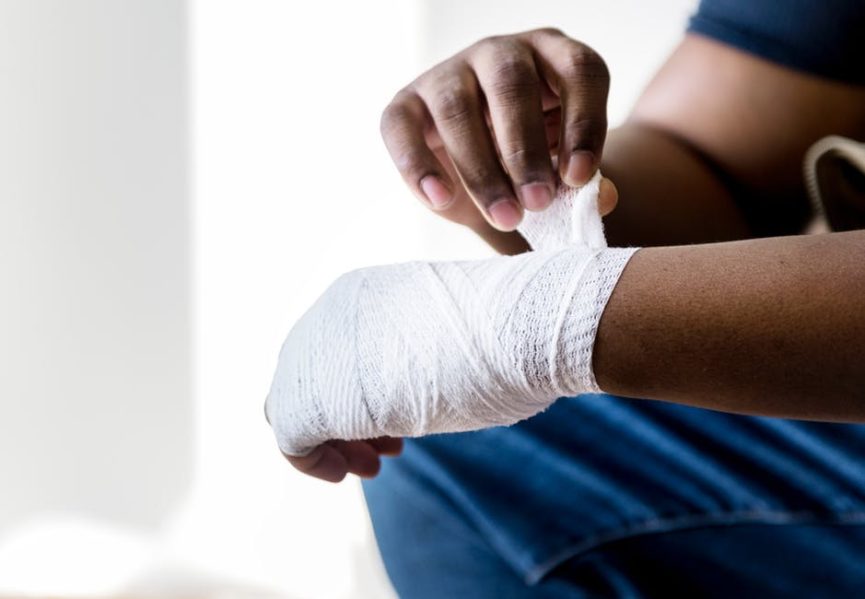One of the more common causes of joint pain is arthritis. Discomfort from that form of joint inflammation is often first noticed between the ages of 40 and 50, according to the National Institutes of Health.
The reality is that there are many types and causes of joint injuries. In this article, we’ll explore the five most common joint disorders while providing tips on how to protect your joints. Platelet-rich plasma and other advanced treatments are shortening recovery times for joint injuries.
1. Dislocated Joints
A dislocated joint results from one or more bones being pulled or pushed out of position. Any type of joint dislocation is generally considered a medical emergency. A dislocation can occur at a major joint like the shoulder or a minor joint like a toe or pinkie.
Joint dislocations typically result from a fall, impact, or trauma. The injury often results in secondary damage to surrounding nerves, ligaments, muscles, or tendons.
Dislocated joints often require treatment through closed reduction. A medical professional manually returns the bones to their proper orientation.
How to Prevent Dislocated Joints
Some accidents cannot be avoided, but individuals can take steps to lower the risk of experiencing a dislocated joint. Taking steps to avoid falls can lower your risk of experiencing dislocated joints.
Wearing proper protective gear while playing sports is another important step that can prevent this form of severe joint dislocation. Finally, try staying active while maintaining a healthy weight.
2. Arthritis
Arthritis isn’t technically a form of joint injury, but it does result in many of the symptoms of a joint injury. Arthritis can lead to joint discomfort and swelling.
Rheumatoid arthritis is a type of autoimmune disorder that leads to chronic inflammation in one or more joints. The degenerative condition can damage a variety of systems that can include the eyes, lungs, heart, and skin.
Osteoarthritis and other forms of arthritis can lead to significant joint damage over time. Sometimes, a joint injury can lead to osteoarthritis in later life.
How to Prevent Arthritis
Arthritis often has a genetic component, but there are steps that can be taken to prevent arthritis. Maintaining a healthy weight can lower your risk of developing osteoarthritis in your knees and hips.
Blood sugar control can also help. Beyond that, exercising, stretching, avoiding tobacco products, and eating fish are known to help slow or prevent the onset of some forms of arthritis.
3. Sprains and Strains
Sprains result from stretched or torn ligaments. There are varying degrees of strains that can result from an injury or accident. Acute strains are more serious and result from a sudden and severe injury.
Not every type of strain needs medical treatment. Mild sprains can be addressed through rest and the application of cold or hot pads.
Your sprain may be serious if you experience numbness or swelling. The inability to put weight on a joint is another sign that medical help is necessary. An unstable joint may put you at risk of further injury.
How to Prevent Sprains
You can prevent sprains by being careful when lifting weights and exercising in general. When you do play sports or exercise, only do so when you are relaxed and not in discomfort.
When sports and exercise are not involved, sprains tend to occur when walking surfaces are slippery or wet. Try to avoid those slippery spots, and make sure that you wear shoes that fit snuggly.
4. Bursitis
Bursitis results from the presence of a bursa, a fluid-filled sac that cushions joints, becomes inflamed due to overuse. The condition is commonly found in the elbow, shoulder, hip, or knee. Less commonly, bursitis can develop in the wrist, ankle, back, or even toes.
Bursitis results from repetitive motions. Limited range of motion, stiffness, discomfort, and swelling are all common symptoms of the condition. Bursitis treatment can involve therapy, medication, rest, or fluid removal.
How to Prevent Bursitis
Any steps that reduce stress on joints can reduce your risk of developing bursitis. Proper posture and sports technique are two examples. You can also avoid kneeling or sitting for long periods of time.
When you do kneel, use cushions to more evenly distribute the weight that you place on your joints. Finally, be sure to ease into exercises or physical activities.
5. Tendonitis
Tendonitis is inflammation of a tendon. When the thick, fibrous cords that attach bone to muscle become inflamed, pain and discomfort become felt around the joint.
The condition can arise around any joint, but it most commonly occurs around the heels, knees, wrists, and elbows. “Tennis elbow” is a form of tendonitis.
The majority of tendonitis cases can be treated with physical therapy, rest, and medications to reduce pain. Some cases can be treated using platelet-rich plasma. Severe cases of tendonitis can lead to the rupturing of a tendon, which will require surgery.
How to Prevent Tendonitis
Tendonitis is often preventable. You can take steps to avoid the causes of tendon inflammation by easing up and reducing the time you spend placing stress on your tendons.
Stretching, honing your sports techniques, and warming up before exercising can reduce the risk that you’ll ever have to deal with tendonitis.
Learn More About Joint Injuries
Joint injuries are debilitating, but they can often be prevented or treated effectively using platelet-rich plasma or another form of therapy. If you experience mild symptoms of a joint injury, the first step should be to rest and give your joint time to heal. If symptoms worsen, seek help from a medical professional.
At RejuvenateYourHealth we specialize in regenerative medicine that helps your body heal itself. Contact our office today to schedule a consultation.

